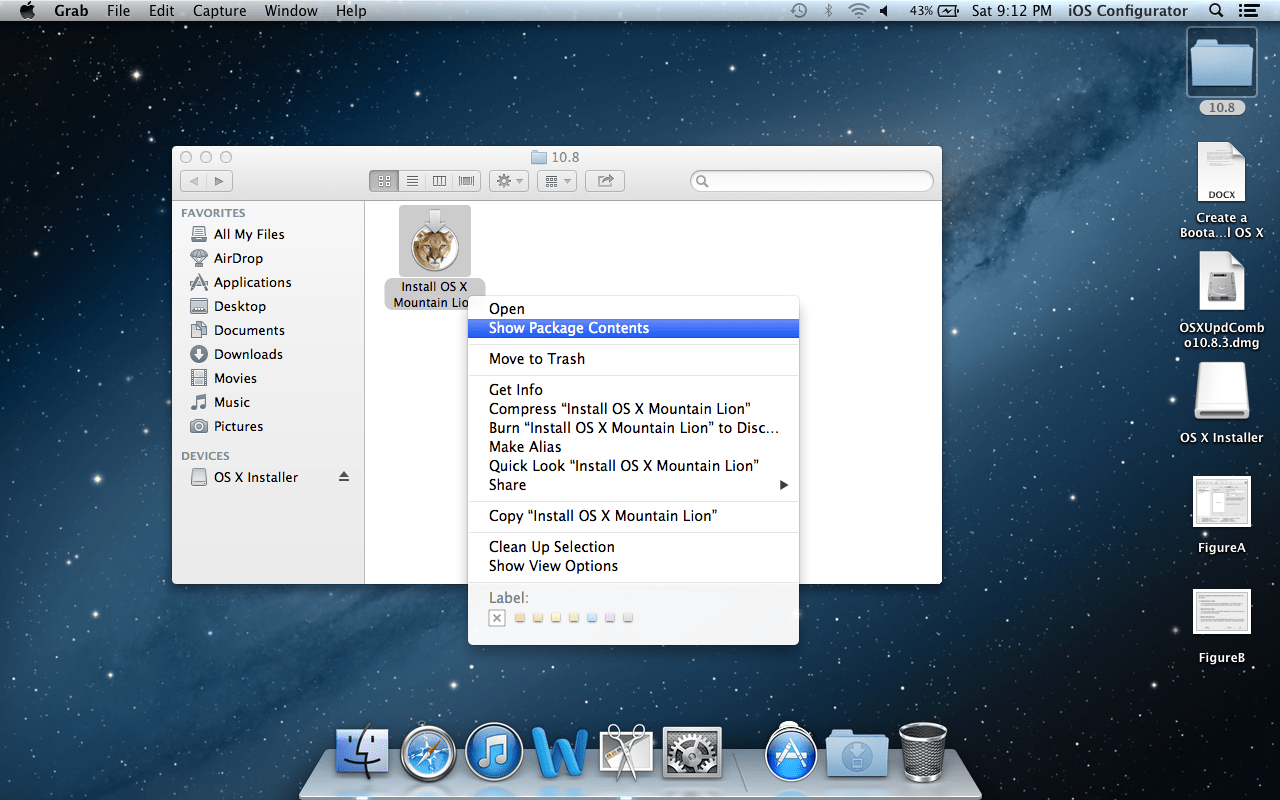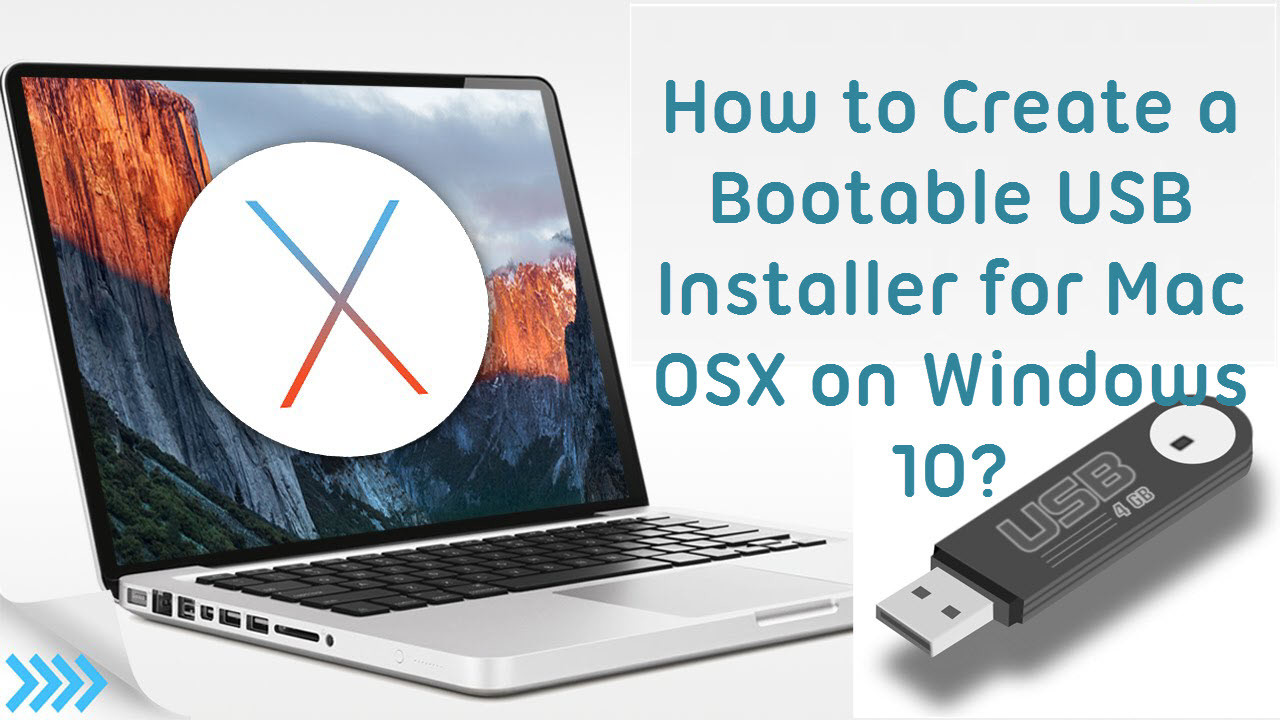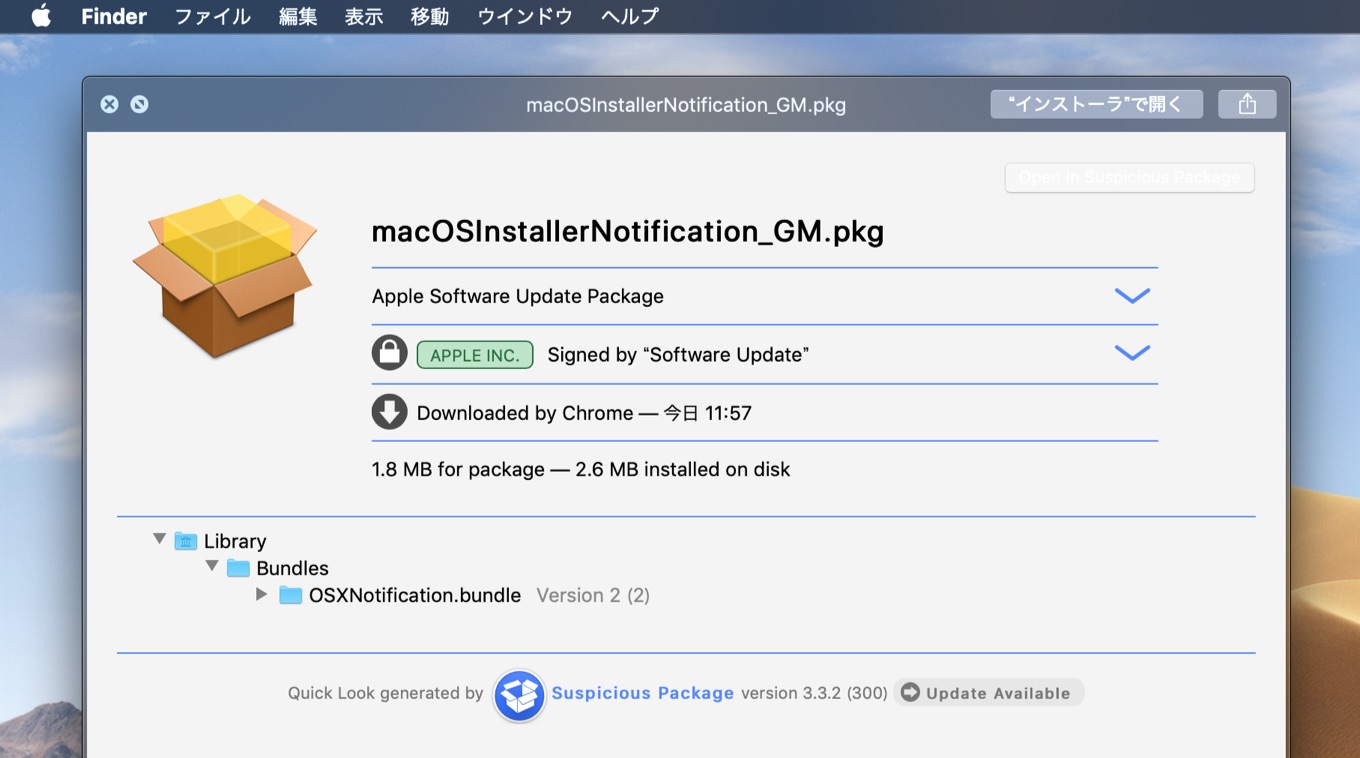Right click on the image file you just download using WinRar to extract the Image File on any folder.
These advanced steps are primarily for system administrators and others who are familiar with the command line. You don't need a bootable installer to upgrade macOS or reinstall macOS, but it can be useful when you want to install on multiple computers without downloading the installer each time.
What you need to create a bootable installer
Download Mac OS X 10.11 El Capitan. Get download Mac OS X 10.11 EI Capitan ISO File ( 7.14GB) Mac OS X 10.11 EI Capitan DMG File (7.41GB) Download Mac OS X 10.10 Yosemite. Download Mac OS X 10.10.5 Yosemite DMG File (6.66 Gb) Mac OS X 10.10.5 Yosemite ISO File (6.66 Gb) Free Download; Download Mac OS X 10.9 Mavericks. But to install or reinstall a recent version of OS X, you must either download a non-bootable installer from the Mac App Store or (via OS X’s invisible, bootable recovery partition) download 6GB. Unless you downloaded the initial release of El Capitan (10.11) and saved the Install OS X El Capitan.app file, you won't be able to download it from Apple. All that is available is the current version 10.11.1. I thought I might be able to download the installer from my own Mac that is running Mojave. That was a mistake. Clicking the download button initiates a software check on my Mac and ultimately says it's unable to download. The only other thing I can think to do is create a bootable disk with the OS X 10.11 image.
- A USB flash drive or other secondary volume, formatted as Mac OS Extended, with at least 12GB of available storage
- A downloaded installer for macOS Big Sur, Catalina, Mojave, High Sierra, or El Capitan
Download macOS
- Download: macOS Big Sur, macOS Catalina, macOS Mojave, or macOS High Sierra
These download to your Applications folder as an app named Install macOS [version name]. If the installer opens after downloading, quit it without continuing installation. To get the correct installer, download from a Mac that is using macOS Sierra 10.12.5 or later, or El Capitan 10.11.6. Enterprise administrators, please download from Apple, not a locally hosted software-update server. - Download: OS X El Capitan
This downloads as a disk image named InstallMacOSX.dmg. On a Mac that is compatible with El Capitan, open the disk image and run the installer within, named InstallMacOSX.pkg. It installs an app named Install OS X El Capitan into your Applications folder. You will create the bootable installer from this app, not from the disk image or .pkg installer.

Use the 'createinstallmedia' command in Terminal


- Connect the USB flash drive or other volume that you're using for the bootable installer.
- Open Terminal, which is in the Utilities folder of your Applications folder.
- Type or paste one of the following commands in Terminal. These assume that the installer is in your Applications folder, and MyVolume is the name of the USB flash drive or other volume you're using. If it has a different name, replace
MyVolumein these commands with the name of your volume.
Big Sur:*
Catalina:*
Mojave:*
High Sierra:*
El Capitan: Jersey m54 font download.
Jazmine sullivan going in circles. Watch the video for Holding You Down (Goin' In Circles) from Jazmine Sullivan's Essential R&B - Spring 2011 for free, and see the artwork, lyrics and similar artists.
* If your Mac is using macOS Sierra or earlier, include the --applicationpath argument and installer path, similar to the way this is done in the command for El Capitan.
After typing the command:

- Press Return to enter the command.
- When prompted, type your administrator password and press Return again. Terminal doesn't show any characters as you type your password.
- When prompted, type
Yto confirm that you want to erase the volume, then press Return. Terminal shows the progress as the volume is erased. - After the volume is erased, you may see an alert that Terminal would like to access files on a removable volume. Click OK to allow the copy to proceed.
- When Terminal says that it's done, the volume will have the same name as the installer you downloaded, such as Install macOS Big Sur. You can now quit Terminal and eject the volume.
Use the bootable installer
Determine whether you're using a Mac with Apple silicon, then follow the appropriate steps:
Jazmine sullivan 10 seconds free download. Jazmine Sullivan 10 Seconds free mp3 download and stream. Home Indy Merch Contact. 38 This Week 5 Today 20 Unreleased 47 Past Releases. Jazmine Sullivan - 10 Seconds. Members: download.
Apple silicon
- Plug the bootable installer into a Mac that is connected to the internet and compatible with the version of macOS you're installing.
- Turn on your Mac and continue to hold the power button until you see the startup options window, which shows your bootable volumes and a gear icon labled Options.
- Select the volume containing the bootable installer, then click Continue.
- When the macOS installer opens, follow the onscreen instructions.
Intel processor
- Plug the bootable installer into a Mac that is connected to the internet and compatible with the version of macOS you're installing.
- Press and hold the Option (Alt) ⌥ key immediately after turning on or restarting your Mac.
- Release the Option key when you see a dark screen showing your bootable volumes.
- Select the volume containing the bootable installer. Then click the up arrow or press Return.
If you can't start up from the bootable installer, make sure that the External Boot setting in Startup Security Utility is set to allow booting from external media. - Choose your language, if prompted.
- Select Install macOS (or Install OS X) from the Utilities window, then click Continue and follow the onscreen instructions.
Learn more
For more information about the createinstallmedia command and the arguments that you can use with it, make sure that the macOS installer is in your Applications folder, then enter the appropriate path in Terminal:
- Big Sur: /Applications/Install macOS Big Sur.app/Contents/Resources/createinstallmedia
- Catalina: /Applications/Install macOS Catalina.app/Contents/Resources/createinstallmedia
- Mojave: /Applications/Install macOS Mojave.app/Contents/Resources/createinstallmedia
- High Sierra: /Applications/Install macOS High Sierra.app/Contents/Resources/createinstallmedia
- El Capitan: /Applications/Install OS X El Capitan.app/Contents/Resources/createinstallmedia

A bootable installer doesn't download macOS from the internet, but it does require an internet connection to get firmware and other information specific to the Mac model.
| First of all this is not my work, I am just pasting my logs so that it would be useful for others. |
| Thank the guy here http://forums.macrumors.com/threads/how-to-create-el-capitan-os-x-bootable-dvd.1923894/page-2#post-22064565 |
| # In VM OSX 10.7, double click 'Install OS X El Capitan.app.dmg' |
| # Now, you will have it mounted |
| 192-168-181-137:~ vikas$ df -kgP | grep Capitan |
| /dev/disk1s2 5 5 0 98% /Volumes/Install OS X El Capitan |
| 192-168-181-137:~ vikas$ |
| # Mount the installer image |
| 192-168-181-137:~ vikas$ hdiutil attach /Volumes/Install OS X El Capitan/Install OS X El Capitan.app/Contents/SharedSupport/InstallESD.dmg -noverify -nobrowse -mountpoint /Volumes/install_app |
| /dev/disk2 GUID_partition_scheme |
| /dev/disk2s1 EFI |
| /dev/disk2s2 Apple_HFS /Volumes/install_app |
| 192-168-181-137:~ vikas$ |
| # Create a ElCapitan blank ISO image of 9900mb with a Single Partition - Apple Partition Map |
| 192-168-181-137:~ vikas$ hdiutil create -o /tmp/ElCapitan.cdr -size 9900m -layout SPUD -fs HFS+J |
| ...... |
| created: /tmp/ElCapitan.cdr.dmg |
| 192-168-181-137:~ vikas$ |
| # Mount the ElCapitan blank ISO image |
| 192-168-181-137:~ vikas$ hdiutil attach /tmp/ElCapitan.cdr.dmg -noverify -nobrowse -mountpoint /Volumes/install_build |
| /dev/disk3 Apple_partition_scheme |
| /dev/disk3s1 Apple_partition_map |
| /dev/disk3s2 Apple_HFS /Volumes/install_build |
| 192-168-181-137:~ vikas$ |
| # Restore the Base System into the ElCapitan blank ISO image |
| 192-168-181-137:~ vikas$ asr restore -source /Volumes/install_app/BaseSystem.dmg -target /Volumes/install_build -noprompt -noverify -erase |
| Validating target..done |
| Validating source..done |
| Retrieving scan information..done |
| Validating sizes..done |
| Restoring ..10..20..30..40..50..60..70..80..90..100 |
| Remounting target volume..done |
| 192-168-181-137:~ vikas$ |
| # Remove Package link and replace with actual files |
| 192-168-181-137:~ vikas$ rm /Volumes/OS X Base System/System/Installation/Packages |
| 192-168-181-137:~ vikas$ cp -rp /Volumes/install_app/Packages /Volumes/OS X Base System/System/Installation/ |
| # Copy El Capitan installer dependencies |
| 192-168-181-137:~ vikas$ cp -rp /Volumes/install_app/BaseSystem.chunklist /Volumes/OS X Base System/BaseSystem.chunklist |
| 192-168-181-137:~ vikas$ cp -rp /Volumes/install_app/BaseSystem.dmg /Volumes/OS X Base System/BaseSystem.dmg |
| # Unmount the installer image |
| 192-168-181-137:~ vikas$ hdiutil detach /Volumes/install_app |
| 'disk2' unmounted. |
| 'disk2' ejected. |
| 192-168-181-137:~ vikas$ |
| # Unmount the ElCapitan ISO Image |
| 192-168-181-137:~ vikas$ hdiutil detach /Volumes/OS X Base System/ |
| 'disk3' unmounted. |
| 'disk3' ejected. |
| 192-168-181-137:~ vikas$ |
| # Create a sparseimage and auto-size it |
| 192-168-181-137:~ vikas$ hdiutil convert /tmp/ElCapitan.cdr.dmg -format UDSP -o /tmp/ElCapitan |
| Reading Driver Descriptor Map (DDM : 0)… |
| Reading Apple (Apple_partition_map : 1)… |
| Reading disk image (Apple_HFS : 2)… |
| ........... |
| Elapsed Time: 32.108s |
| Speed: 222.6Mbytes/sec |
| Savings: 27.8% |
| created: /tmp/ElCapitan.sparseimage |
| 192-168-181-137:~ vikas$ hdiutil resize -size `hdiutil resize -limits /tmp/ElCapitan.sparseimage | tail -n 1 | awk '{ print $1 }'`b /tmp/ElCapitan.sparseimage |
| # Convert the ElCapitan sparseimage to ISO/CD master |
| 192-168-181-137:~ vikas$ hdiutil convert /tmp/ElCapitan.sparseimage -format UDTO -o /tmp/ElCapitan |
| Reading Driver Descriptor Map (DDM : 0)… |
| Reading Apple (Apple_partition_map : 1)… |
| Reading disk image (Apple_HFS : 2)… |
| ........... |
| Elapsed Time: 28.851s |
| Speed: 248.0Mbytes/sec |
| Savings: 0.0% |
| created: /tmp/ElCapitan.cdr |
| 192-168-181-137:~ vikas$ |
| # Remove the unwanted images |
| 192-168-181-137:~ vikas$ rm /tmp/ElCapitan.cdr.dmg |
| 192-168-181-137:~ vikas$ rm /tmp/ElCapitan.sparseimage |
| # Rename the ElCapitan ISO image and move it to the desktop |
| 192-168-181-137:~ vikas$ mv /tmp/ElCapitan.cdr ~/Downloads/ElCapitan.iso |
| # Eject the Installation dmg now in Finder |